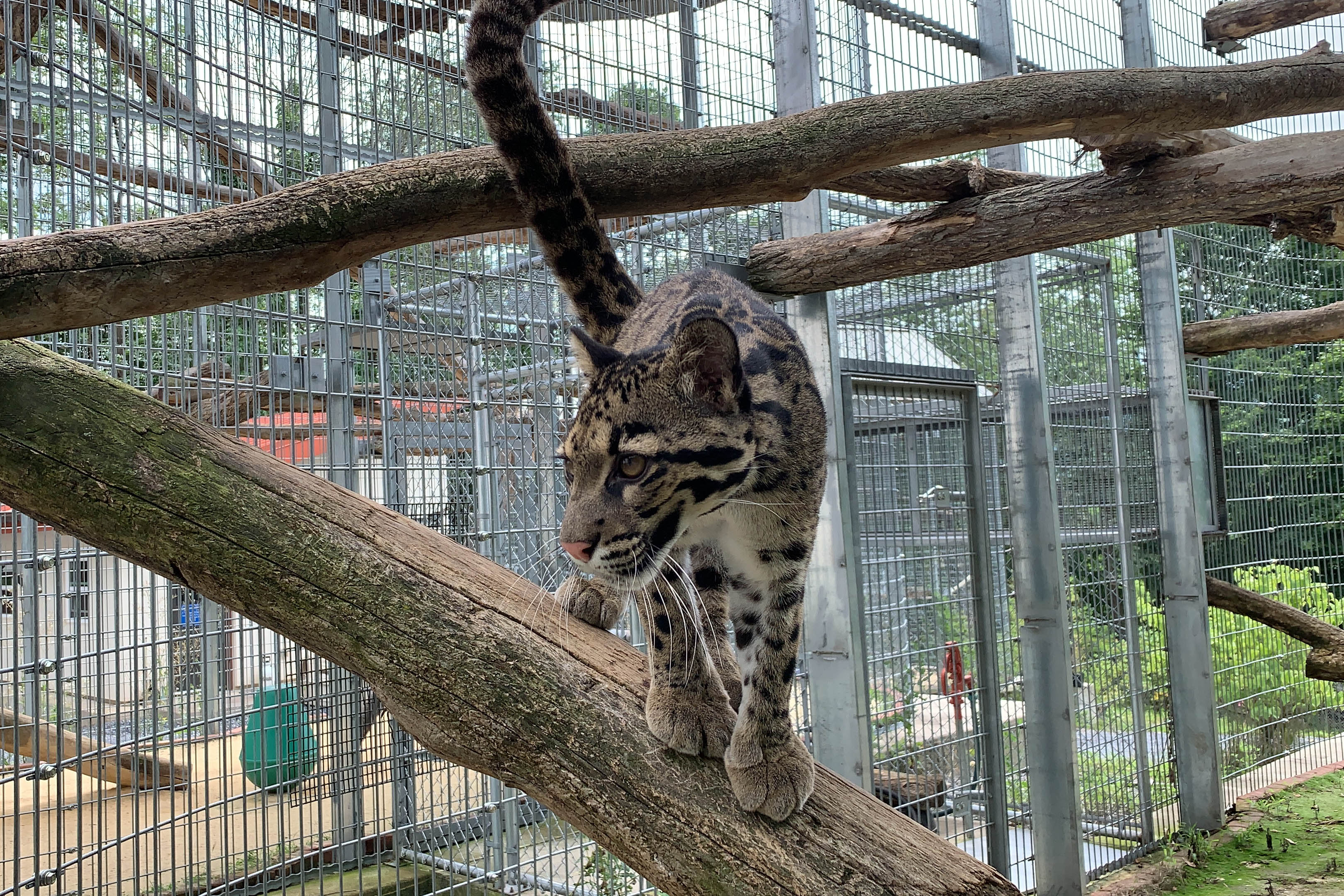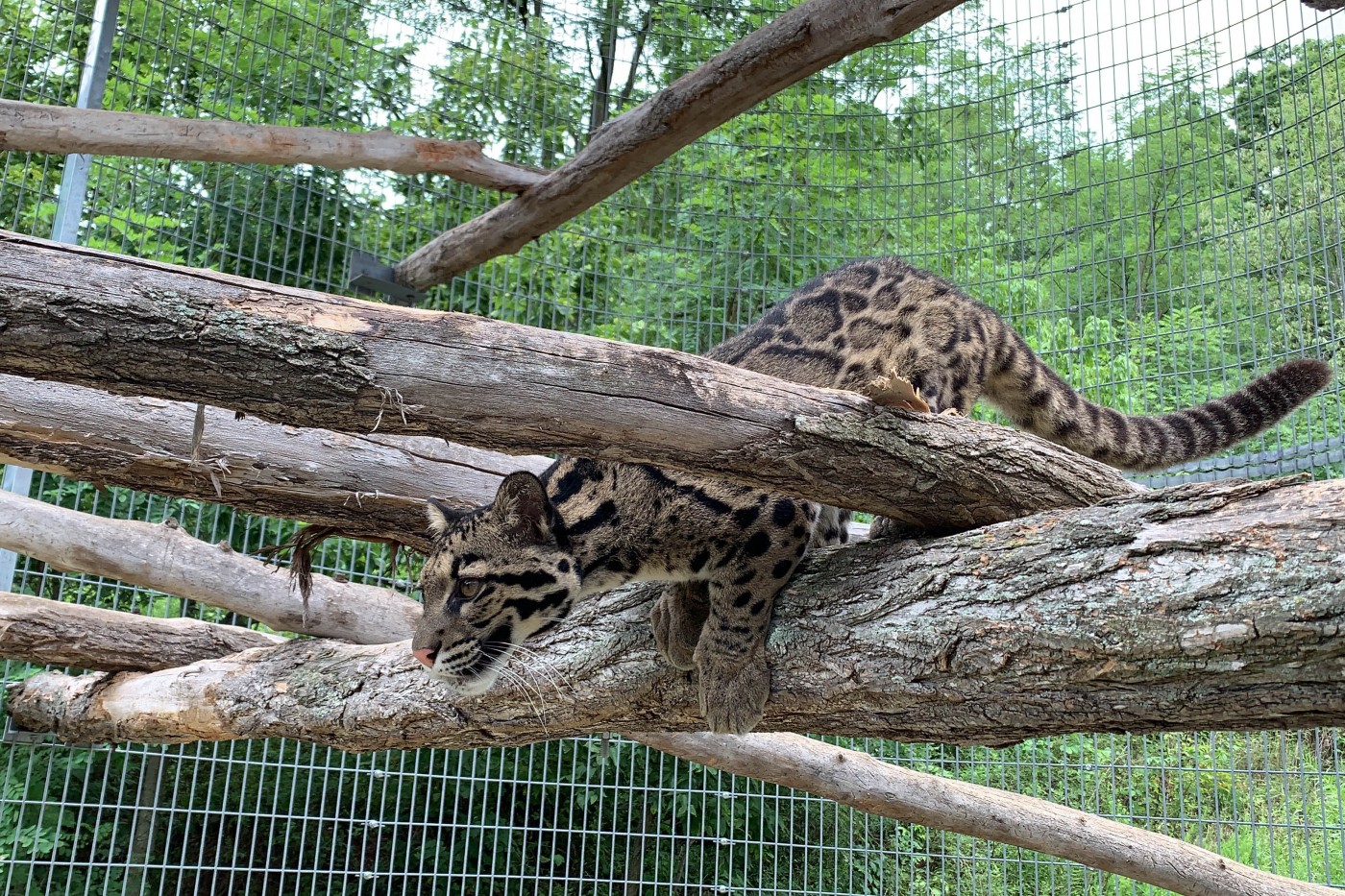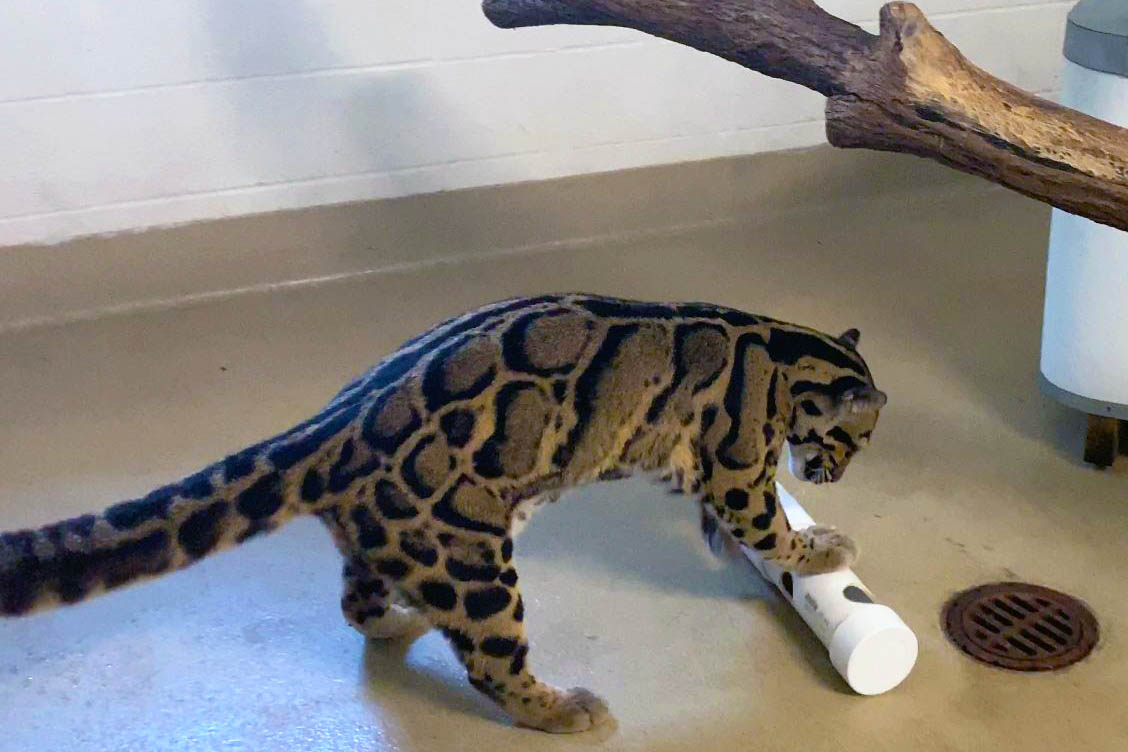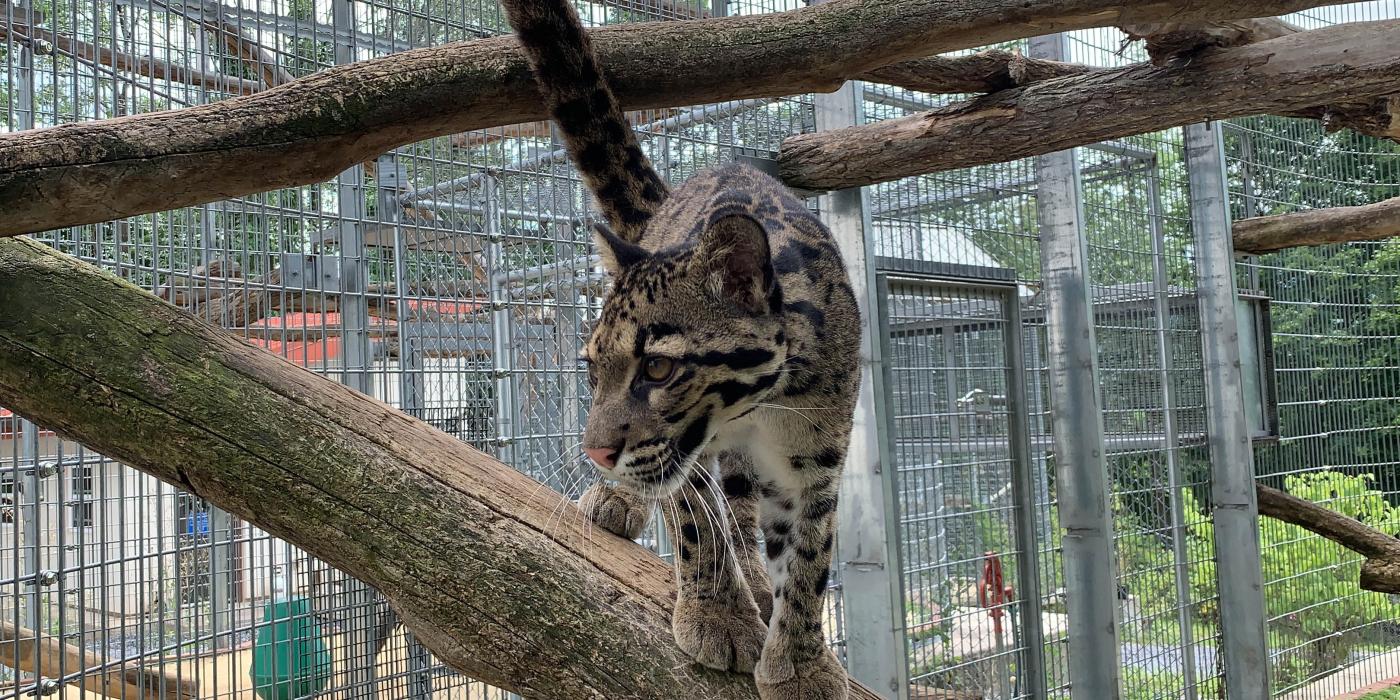Featured Creature: Clouded Leopard
Say hello to Ariel, our 3-year-old female clouded leopard! Along with red pandas and maned wolves, our carnivore team cares for four of these charismatic cats.

Before we formally introduce you to Ariel, we want to share some of our favorite facts about her species. Clouded leopards are arboreal felines; they are well adapted to life in the trees. They have large paws for gripping branches, specialized anklebones for ease of climbing up and down trees and long, thick tails that help them balance as they move through the canopy.
Clouded Leopards’ canine teeth are 2 inches in length—the longest of any cat relative to their body size. Another trait that makes them unique is that they are unable to purr or roar due to the bone structure in their neck. They do make other vocalizations, though, such as growls, hisses and “chuffs”—a friendly greeting that sounds like a quick gust of wind!
The best part about working with Ariel and our male clouded leopards is getting to know their individual personalities. Ariel seems to enjoy receiving attention from her keepers and has a timid and sweet personality. She came to the Smithsonian Conservation Biology Institute (SCBI) last year following a breeding recommendation from the Association of Zoos and Aquariums’ Species Survival Plan (SSP).
The SSP scientists determine which animals to breed by considering their genetic makeup, nutritional and social needs, temperament and overall health. They found Ariel to be a good match for our 12-year-old male, Ta Moon. Like Ariel, he is sweet toward his keepers, though like any cat he can be demanding when waiting to be fed. He has bred before and is always calm, patient and attentive towards his mates.

Because clouded leopards are solitary in the wild, Ariel and Ta Moon live separately. They are next-door neighbors, though, and can see, hear and smell one another through mesh “howdy” doors between their enclosures.
So far, the pair seem to get along well. They pay a lot of attention to each other and frequently exchange chuffs. Ariel is of breeding age, but we have not yet introduced them face-to-face without a barrier in between them. With the uncertainties surrounding the COVID-19 pandemic, we skipped breeding this past winter out of an abundance of caution. That being said, we are encouraged by the affiliative behaviors we are seeing.
To encourage our clouded leopards to use their natural behaviors, we offer them a variety of enrichment ranging from heavy duty plastic toys to puzzle feeders and ice treats. While Ariel has received a bunch of different items to play with, she seems to enjoy puzzle feeders the most.

These toys are made from a PVC pipe, capped at both ends, with one or two small holes drilled into the side. We often hide small meatballs inside as treats. This toy is a great option for the cats because it requires them to think about how to get the food and exert some energy—flipping, rolling and otherwise manipulating the feeder—to reap the benefits of their hard work. Ta Moon’s favorite enrichment is anything that involves food, of course.
Since Ariel and Ta Moon enjoy socializing with keepers, they enthusiastically participate in husbandry training sessions with us. We use positive reinforcement to teach them behaviors that help us monitor their health. Participation is always voluntary, but they know that they will get a tasty treat plus heaps of praise from us for doing the behaviors asked of them. There are no negative consequences if they do an incorrect behavior or choose to walk away.
Ta Moon leaned many of these husbandry behaviors when he was a young cub, so he is a seasoned pro at doing easy and complex behaviors on cue. For example, he will voluntarily enter a small device that is colloquially referred to as a “squeeze.” It doesn’t actually squeeze the cats but has a movable wall that can be used to temporarily restrict their mobility so our veterinary team can conduct exams or administer medications.
Both cats have mastered stationing (standing still) on a scale. Ariel is approximately 22 pounds (10 kilograms) and Ta Moon weighs just over 45 pounds (20.7 kilograms). They are in the process of learning the cue to line up next to the mesh so that we can apply flea and tick medication.
Being able to learn about clouded leopards’ biology, behavior and reproduction is an amazing opportunity. These cats are considered vulnerable by the International Union for Conservation of Nature due to habitat destruction and illegal poaching. Still, there is reason to be optimistic about their future. The knowledge we have gained from studying them has helped inform conservation practices and strategies in their native Thailand.
Since 2002, the Zoo and SCBI have collaborated with Nashville Zoo, Point Defiance Zoo, Thailand’s Zoological Park Organization and the Clouded Leopard Species Survival Plan as part of the Clouded Leopard Consortium (CLC). Together, we develop breeding programs and field monitoring projects for clouded leopards in Thailand. SSP coordination with the CLC in Thailand has resulted in the birth of more than 80 cubs!
Collaboration is the key to the conservation of so many rare and endangered species that we care for and study. Consortium scientists continue to develop reproductive management techniques to maintain populations not only in the U.S. but also throughout the world.
The first successful clouded leopard artificial insemination was performed at Nashville Zoo in 1992 by SCBI scientist Dr. JoGayle Howard and Nashville Zoo president Rick Schwartz. In 2015, SCBI scientists contributed to a successful birth using artificial insemination at the Khao Khew Open Zoo in Thailand. In 2017, SCBI and the Nashville Zoo collaborated to produce a female clouded leopard cub at the Tennessee facility using frozen/thawed semen. These accomplishments were a giant step for global conservation efforts.
Here at SCBI’s headquarters in Front Royal, Virginia, we have been breeding this species for decades. To date, we’ve welcomed 50 surviving cubs. Our team is looking forward to seeing what the future holds for Ariel and Ta Moon! When the time is right, we hope that they will become parents and contribute to their species’ survival.
This story was featured in the April 2021 issue of National Zoo News.
The Smithsonian’s National Zoo is temporarily closed to help prevent the spread of COVID-19.Our whole team works diligently to care for our animals and keep you connected to the Zoo. With your support, our conservation mission continues. If you can, please join us in this important work by making a donation today. On behalf of the animals we care for and work to protect: thank you.
Related Species:




